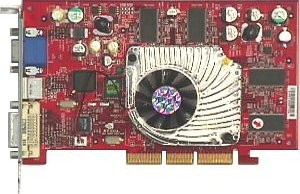When I first read about the PS3 I was so astonished by its specs that I immediately fell in love with it.
When the Unreal Engine 3.0 was first presented at E3 2005, Tim Sweeney suggested a GeForce 6800 Ultra for just a decent framerate, and it was the top of the line hardware of that time!
The RSX GPU inside the Playstation 3 was based on the new G70 architecture by nVidia, it had more power than anything on the consumer market in 2005.

I was also wondering about the Cell, this really innovative CPU which was attractive for its strong multi-threaded design, with a PPE controlling seven SPUs for enhanced parallel performance.
A hard disk, which came pre-installed with Linux, and the fact that it would have used OpenGL ES completed this fantastic image I had about the PS3 as the perfect geek solution for high power computing (and awesome programming possibilities) at a reasonable price.
While not only me, but the entire world, was dreaming about the new Sony console, at Microsoft they were working hard and by the end of the same year the Xbox 360 became reality.
Ok, it had no Blu-ray (which Sony claims to be a must have for next-gen games…), it had a more ordinary (still great!) double-threaded tri-core PowerPC Xenon, it had not a “Reality Synthesizer” but a more modest Xenos GPU.
The Xenos is actually modest only in the name, its unified shader architecture was something ahead of its time, something that nVidia has adopted only with GeForce 8 (and it’s not a DirectX 10 requirement, as someone could believe), the same could be told about the embedded DRAM, a solution never seen in the past.
What is really irritating, at least from my point of view, is the usual Microsoft way to do things, they planned 1000 ways to raise a fence all around their console, they absolutely don’t want you to run anything else than their kernel, and they enforce this concept taking all the possible hardware measures like hardwiring a different encryption key in every Xenon CPU produced!
I should also admit that Microsoft (as Sony) gives you some kind of support for homebrew games, but, for it is mainly a software company, you are again enforced to use their software only: you cannot program on your console directly, running Linux, Vim and GCC, like you could on the Playstation 3, you must use XNA Game Studio Express (which now can be downloaded for free) on the PC with its Visual Studio environment…
We have demonstrated that the Xbox 360 is a great machine but not a viable solution for a geek seeking for a flexible and powerful programming platform, at least until someone finds how to crack it to install Linux, as done on the first Xbox (but this time I think it will be much harder).
And so we come to the Playstation 3, it seems perfect, it has a parallel CPU that makes you learn and stress multi-threaded programming (and not only, as the Cell is something so innovative that needs a new approach), a powerful high-end GPU and a price which is undeniably high but that, as time passes, can only lower.
I thought: “Great, now I know what I will buy next, a Playstation Three!”. I was also wondering about graduating with a thesis on numerical analysis performed on RSX shaders, it would have been so cool and geek. 😀
The only problem is that we’re not in 2005! We are in 2007, what was the future is now the present (like the Unreal Engine 3, like Gears of War, which is running only on the Xbox 360).
Now, I know that PS3 is also the present, that it is real, but it is not yet distributed in Europe, not yet produced in high volumes and, what is worst, it has been in the market only for a couple of months and it is sold for a high price that won’t decrease for a very long period!
I was feeling abandoned and betrayed, orphaned of what I thought would have been my future rendering and developing platform, but then, little by little, PCs inspired my confidence again. 🙂
Now I think that a Core 2 Quad Q6400 and a GeForce 8600 Ultra (which specs has been rumored this very day) cannot be so bad, I’m eager to see them sold in shops, and this time we are sure they won’t be postponed for a year. 😉




